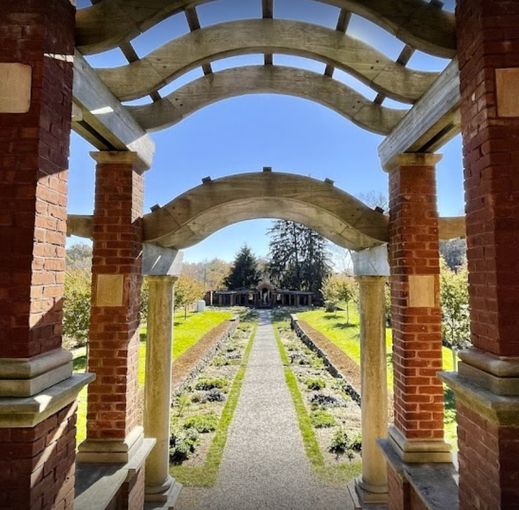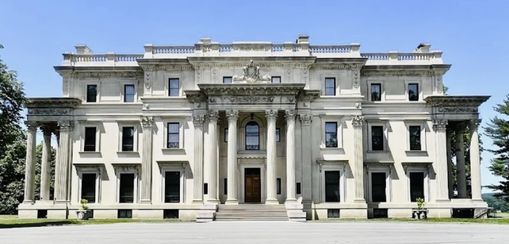
All it takes is a single glance at the Vanderbilt Mansion to recognize the aristocratic features it has boasted for years. After all, it was built by one of the wealthiest American families and designed by the country’s finest architects. However, there’s more to the Vanderbilt Mansion than what the naked eye has managed to see. Here’s everything you need to know about this historic Mansion.
The famous Vanderbilt Mansion exudes power and radiance just the way it did back in the 19th century. The once home of Cornelius Vanderbilt.
History of the Grounds
It’s no surprise that William Henry Vanderbilt, who was once the wealthiest man in America, was also the father of prolific home builders of the time. The houses his children built openly boasted wealth and opulence.
When Frederick Vanderbilt bought Hyde Park, it already had an illustrious history. Before his ownership, the place was owned by several renowned personalities throughout the course of history. Some of them included a noted horticulturist David Hosack and George Washington’s physician Dr. Samuel Bard.
Speaking of life at Hyde Park, it was as extraordinary as the site itself. Most of the pleasures were rooted in outdoor activities and intimate house parties. Carriage rides and golf games were the norms of the time.
The Mansion was huge and grand, with several formal rooms on the ground floor arranged in a classical plan. Furthermore, there were subsidiary rooms, Mr. Vanderbilt’s office, and of course, the long and grand staircase.
The construction of the staircase is done in a way that it’s arranged around a hall that provides views of the Catskill Mountains and Hudson River. Made using exotic wood paneling, beautiful velvets, and imported marble, the Mansion’s interiors spared no expense.
Unfortunately, on a fateful day in 1926, Louise Vanderbilt, one of the children, passed away. Following his demise, Frederick kept living a quiet life there as he made sure to maintain the Mansion in the best possible way.
However, after his passing, the house was given to Margaret Van Alen, Louise’s niece, since Frederick had no children of his own. When Roosevelt, who was the American President as well as Van Alen’s neighbor, suggested she sell the house to the government, she conveyed 200 acres of land and the furnishings along with it. Soon, the house came under the management of the National Park Service and was made accessible to the public in 1940.
Before You Visit
Now that we’re done introducing this glorious site, here are some things you should know before you visit it.
- You can walk and hike freely on the grounds since there are no charges for the stated activities.
- The parking on site is free.
- Mansion tours aren’t free of cost.
- The Vanderbilt Mansion grounds are open year-round.
- Various events take place at the site throughout the year.
Remnants of the Vanderbilt Mansion

It’s interesting to note that the Vanderbilt Mansion wasn’t always as grand as history describes it to be. It was all due to Vanderbilt’s jealousy that the Mansion was expanded from time to time.
When the Gold Coast mansions in the 1890s became more opulent, he demolished over five brownstone houses to enlarge the Vanderbilt Mansion.
Many visitors also claim that the house was more of a display than a place for living. It often exuded uncomfortable and chilly vibes and appeared suitable only for social functions.
The Famous Fireplace
The fireplace that once sat on the second-floor room is among the remains of this Mansion. After the Mansion’s demolition, the fireplace and several other pieces of art were sent to the Metropolitan Museum of Art.
Decorated with marble caryatids, this reddish brown fireplace was designed by Augustus Saint-Gaudens. Based on the owner’s preference, it was made to represent love and peace. Surrounded by a mosaic, there was also some Latin inscription on it that Cornelius Vanderbilt came up with himself.
When translated, the inscription reads: “The house at its threshold stands as a reference of the master’s good will. Whoever arrives is welcomed, and whoever departs is given a farewell and warm wishes.”
The pieces and the fireplace are still on display in the Museum’s courtyard. Today, the property that was once called the Vanderbilt II Mansion at 742-748 Fifth Avenue is a department store.
The Monumental Gates
The monumental pair of gates guests often used to enter the Mansion once is now in Central Park. The gates were also forged by Dauvillier and Peregotte in 1894 in Paris. There is still a mystery about how the gate survived since there isn’t any record stating the details. It was in the year 1939 that Alice and Cornelius II’s daughter Gertrude Vanderbilt Whitney donated them to Central Park.
When visitors would enter through the gates, they’d immediately reach the “Porte-cochere,” where six sculptural reliefs greeted them. Reminiscent of the Renaissance works of Italy, they basically depicted musical groups of seven girls and boys singing.
Following the Mansion’s demolition, the friezes were installed in the Sherry-Netherland Hotel, where you can still see them. However, the remaining friezes disappeared without a single trace. It is still unknown where those remains are.
How to Get to the Vanderbilt Mansion
If you’re driving from the New York State Thruway (1-87), take 299 East from either North or South, Exit 18 to 9W South, and follow the directions to Mid-Hudson Bridge. Once you’ve crossed the bridge, reach Route 9 North by following overhead signs. The Roosevelt Home will first appear on the way, and two miles north of it is the Vanderbilt Mansion.
Wrapping Up!
The famous Vanderbilt Mansion, which initially consisted of 54 rooms, was designed by the McKim, Mead & White firm. After being passed down from one generation to the next, it did suffer a bit of deterioration, but efforts made to maintain its originality bore fruit. The construction, which roughly took three years, made sure to incorporate elements of both European and American architecture.
There’s absolutely no other place in the region that would give you a serene view of the Hudson River and the surrounding formal gardens and manicured lawns. Boasting a rich history and wonderful architecture, this Mansion is a must-visit on your trip to Hyde Park in New York.
